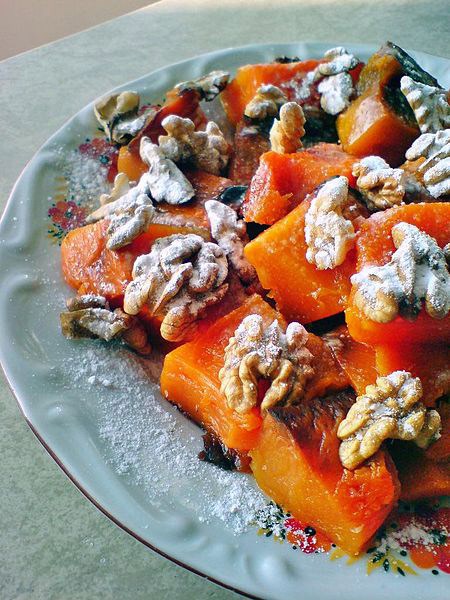Pumpkins are obviously one of the more popular harvests this time of the year.
I feel that pumpkin, as a food, is quite neglected in our everyday diets. Although this bright orange squash is approximately 90 per cent water, it is loaded with beta-carotene (an important antioxidant) and a list of nutritional elements that play an important role in a well-balanced diet.
Pumpkin is a member of the squash family and, as with all squash, is a fruit. Any product of a plant containing seeds is botanically classified as fruit, just like melons for example. There are two main general types of squash – summer squash and winter squash. Summer squash are ones that can not be stored for long periods of time. Zucchini would be an excellent representation of a popular summer squash. Winter squash, on the other hand, can be stored for long periods of time under ideal storage conditions. They should be kept away from light and in an area that is moderately cooler than room temperature. Good ventilation is also necessary. Along with pumpkins, other winter squash are acorn, butternut and autumn squash.
Pumpkins are most popularly used as jack-o-lanterns on Halloween night and in varying recipes for pies, cakes and soups. Rarely does one see pumpkin served at the table on its own. It can be used in any application that one would use other winter squashes and undeniably will offer more flavour to the dish. Cubes of oven-roasted pumpkin, in a medley of other colourful vegetables, are a perfect accompaniment to an autumn meal. Alternatively, try using small chunks of pumpkin in your next stir-fry or pasta dish. To make preparation easier, cut the pumpkin into workable pieces to aid in peeling and chopping. Winter squashes should always be peeled before consuming.
Their tougher skin is often challenging for the traditional vegetable peeler, and therefore a knife may be more facilitating for this task. Afterwards, chop the pumpkin into pieces best suited for the recipe being planned.
As well as the flesh, the seeds are also edible. The seeds are sometimes easily forgotten about and discarded along with the innards. Roasted pumpkin seeds can easily be prepared and transformed into a nutritional snack. Separate the seeds from the extracted inner filaments and lightly coat the seeds with vegetable or olive oil. Toss with salt and pepper or seasoning salt, if desired, and roast them on a baking sheet in a 450-degree oven, stirring occasionally, until golden brown and crispy, approximately 12 to 15 minutes. Be careful to watch them closely, as they burn quite easily. Serve them in a bowl on their own, or with a mixture of other seeds, nuts and dried fruit. Pumpkin seeds are credited with a number of medicinal properties and are a great source of numerous minerals. However, due to their high fat content, they should always be consumed in moderation.
Dear Chef Dez:
We always buy cans of pureed pumpkin this time of year for different dessert recipes. Since pumpkins are available fresh, wouldn’t it be more economical to make it myself? How do I go about doing this?
John G., Chilliwack, B.C.
Dear John:
It can be done quite easily. Cut a fresh pumpkin in half and remove the seeds and the stringy filaments. Place the cut sides down on a baking sheet and bake in a 350-degree oven until the flesh is very tender – approximately one hour. Spoon the cooked flesh off the skin and into a food processor and puree until smooth. Transfer it to a large, fine wire mesh strainer set over a bowl, cover and let drain in the refrigerator overnight. Discard the liquid, and use the drained puree.
Chef Dez is a food columnist, culinary instructor and author. Visit his site at www.chefdez.com.



